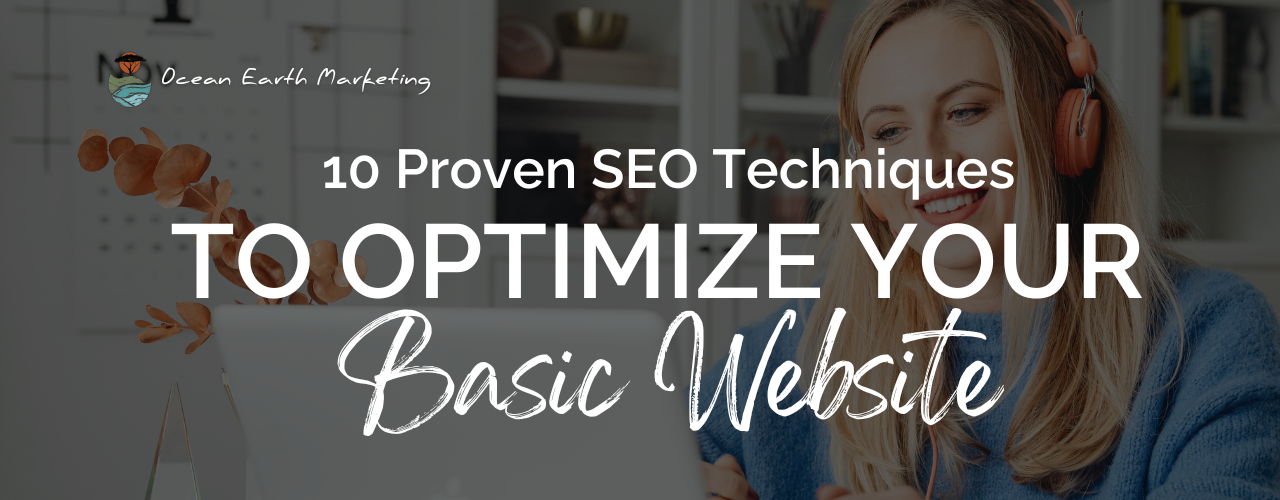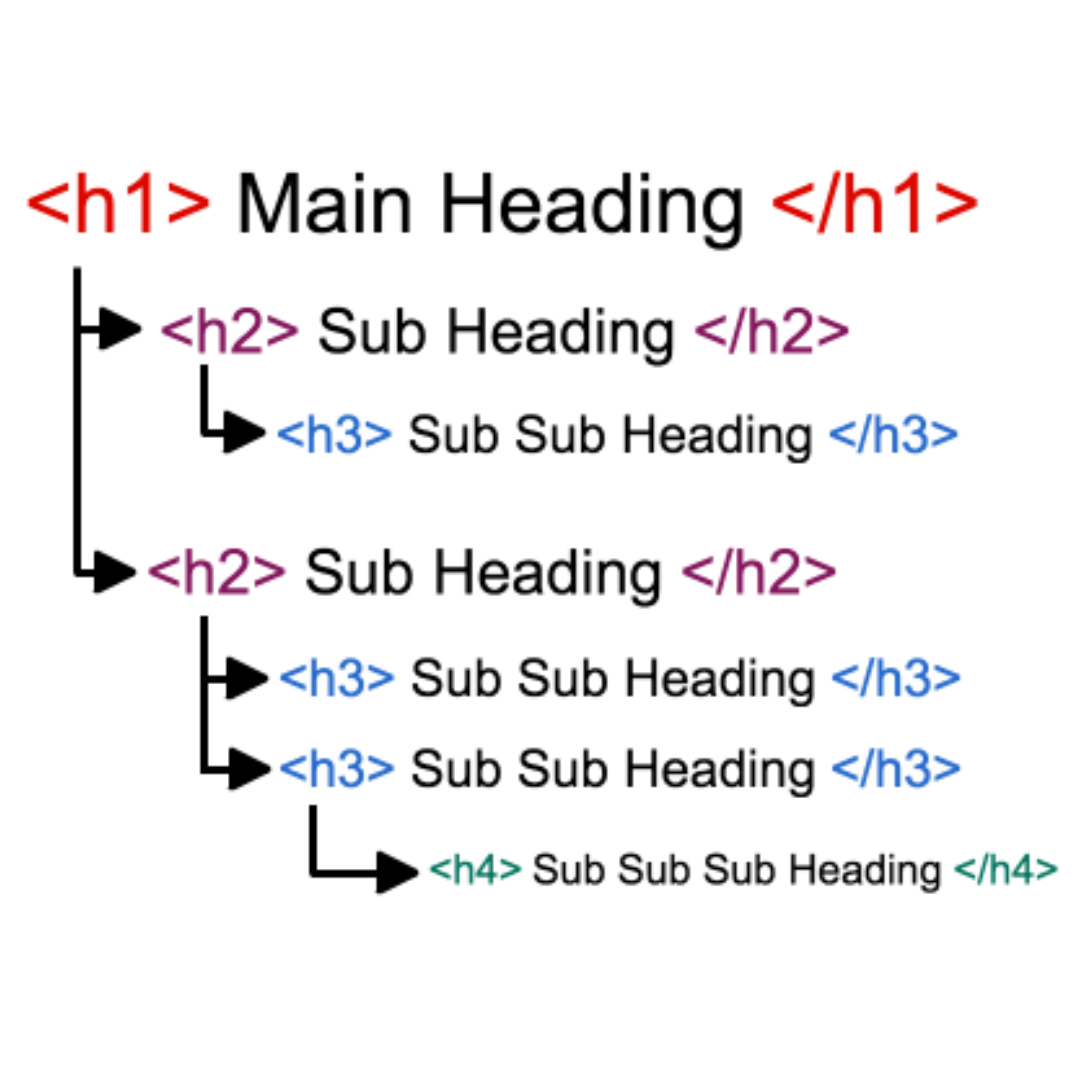10 Proven SEO Techniques to Optimize Your Basic Website
Just launched a website? Great! But how do you get people to actually see it? One of the best ways is to make sure it shows up high in search results on Google and Bing. To do that, you need to learn a bit about SEO, which is basically the art of making websites more search engine friendly.
Billions of people use Google every day. That means making your website easy to find in search results (SEO) is super important if you want to reach more people and get them to visit your site."
Use this checklist to make sure your website is optimized for search engines, and include it as part of your overall digital marketing plan:
Feature Relevant Keywords and Keyword-Rich Content
Have Internal Links and Anchor Text
Use High-Quality Content
Suitable Titles and Descriptions for Each Website Page
Have a Clear Site Structure With Headers
Add Alt Text to All Your Images
Mobile Optimized
Optimize for Speed
Install and Link Google Search Console, Google Analytics and Bing Webmaster Tools
Website and URL are Secure
Feature Relevant Keywords and Keyword-Rich Content:
Keywords are the words or phrases people use when searching online, and to make your website easier to find, you need to incorporate these keywords in key areas like page titles, headings, content, and image descriptions. However, it’s important to ensure this is done naturally, without keyword stuffing. Focusing on target keywords in every SEO effort, whether it’s choosing the URL slug, crafting the H1 header, or setting the meta title, is crucial for your website to rank well.
Keyword research tools can be really helpful. There are free ones that show you popular search terms, and paid ones that help you choose the best keywords based on how people search and how competitive they are.
Here are a list of popular Keyword research Tools:
Keyword Surfer (extension)
Keywords Everywhere (extension)
People search for things with specific needs, so your keywords should be detailed and focused, not just general words. This is called using "long-tail" keywords
Example:
Short Tail: Venue Hire
Long Tail: Wedding Venue Pretoria South Africa
Targeting specific keywords may attract less traffic, but ranking for more precise searches often leads to a higher conversion rate.
2. Internal Links and Anchor Text:
Anchor Text:
When writing your website content, think about where you can use anchor text. This is the clickable text that takes people to a different page, either on your website or somewhere else online. Good anchor text helps people find what they need and should include keywords related to your business
Internal Linking:
Your website should be organized so it's easy for people and search engines to find what they need. Internal Links between different pages on your website should provide useful information, answer questions, or engage people. This helps Google understand what your website is about and sends the right people your way.
Relationship between the two:
Anchor text is a component of internal linking. The anchor text is what users click on in an internal link, and the link itself directs them to another page within the same site.
3. High-Quality Content:
Creating high-quality content is key to improving your SEO and getting more pages on your site to rank for different search terms. For many businesses, this involves adding a blog as part of their overall SEO and marketing strategy. To maximize your content's impact, focus on the keywords you're targeting and ensure your pages are detailed enough to be helpful. While concise content is beneficial, Google favors content that thoroughly answers users' questions. Pages with fewer than 200 words may struggle to rank well, so aim to make each page valuable by solving problems, answering questions, or guiding visitors through your site.
4. Suitable Titles and Descriptions For Each Website Page:
A title tag is like the headline of your page when it shows up in search results. Make sure the words in your title are clear and describe what your page is about.
Example:
Bad Title: Gym Class
Good Title: Affordable Pilates Gym classes
Using a meta description, which is a longer summary of your page, along with your title tag can make people more likely to click on your website in search results. Title tags also show up in people's web browser tabs and on social media when your content is shared.
5. Have a Clear Site Structure With Headers:
Make sure every page on your website has a clear and informative title, a subtitle, and well-organized content. This helps search engines understand what your page is about. The most important part is the page title. It should be marked as an H1 in your website editor. Think of the H1 as the main headline. Make sure it accurately describes the page's topic and includes the main keywords.
Each page should only have one H1. After the H1, you can use H2 and H3 tags to organize your content further. H2 tags are for headings, and H3 tags are for subheadings. This structure helps search engines and visitors easily navigate your page.
6. Add Alt Text to All Your Images:
Alt text plays a crucial role in helping search engines understand the content of images on your website. Since search engines can't see images, they rely on these brief descriptions to determine what the image depicts, which can improve your site’s ranking. Additionally, if an image fails to load, the alt text will be displayed, giving visitors an idea of what the image is supposed to represent. When writing alt text, make sure it accurately describes the image and includes your business name or relevant keywords whenever possible.
Example:
Bad Alt Text: Image of Fishing
Good Alt Text: Boy smiling and deep sea Fishing with Peter Adventures in the Mossel Bay
7. Mobile Optimized:
Google gives priority to mobile-friendly websites, making it essential to ensure your site offers a seamless experience on any device. This involves creating a visually appealing and user-friendly design that works well on smartphones, tablets, and desktops alike.
8. Optimize for Speed:
Your pages should ideally load in under 2 seconds, and definitely no more than 3 seconds. Achieving this can boost your search engine rankings. Several factors can slow down your page load time, such as issues with your content management system (CMS), inefficient code, limited bandwidth that can't support your traffic, or having too many large images on a single page
Here's a list of popular tools to measure your website's loading speed:
9. Install and Link Google Search Console, Google Analytics and Bing Webmaster Tools:
Google Search Console is a powerful tool for monitoring and improving your site's performance in Google search results. It ensures that all your pages are correctly found and indexed, while also highlighting areas for improvement. With features that let you identify the keywords driving the most traffic, submit your sitemap, fix website errors, and view your Core Web Vitals scores, Search Console is essential for optimizing your website's search presence and setting up site search tracking.
While Bing isn't as popular as Google, it still boasts over 100 million daily active users, making it worthwhile to optimize for. In SEO, data is crucial, and if Bing Webmaster Tools offers valuable insights, it’s smart to take advantage of it.
Google Analytics is one of the most effective tools for understanding how visitors find and interact with your website. It allows you to track the amount of traffic coming from Google, identify the pages that attract the most visitors, and monitor changes in your traffic levels. Additionally, it helps you see which other sites and search engines are driving traffic to your site, as well as providing insights into average engagement rates, page views, and time spent on your site.
10. Website and URL are Secure:
Google places high importance on HTTPS encryption and will display a security warning in search results for websites that aren't encrypted. To ensure your site is secure and trusted by visitors, it's crucial to use a website builder that prioritizes security. For example, includes an SSL certificate with every website, which encrypts data and verifies the site’s authenticity. Since HTTPS has been a confirmed ranking factor in Google's algorithm for some time, if your site isn’t yet using HTTPS, now is the time to make the switch.



